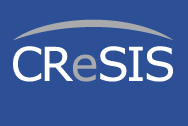Summer Teacher Workshop at KU
The Heat is On! Confronting Climate Change in the Classroom
Working Groups
Seismic Studies of Ice Sheets
Participating Scientist: TBD
Graduate Student(s): TBD
Content Areas: General Science, Physics
Level: Most appropriate for high school, although some applications could be used in middle school.
Background: Seismic studies use sound waves to measure the properties of the ice. Tiny explosions are set off in the ice and instruments measure their echoes from internal structures and the ice-bed interface. Seismic data can provide a detailed picture of the nature of the ice at a given location. Although raw seismic data can be very intense, processed seismic data for student use can be found through the CReSIS Data Portal and the goals for this group should center around developing activity that utilize the seismic data.
Objectives:
-Understand seismic wave behavior
-Collect and Interpret basic seismic data
-Interpret seismic data from ice sheets
-Develop unit/activity for physics/earth science
Radar Studies of Ice Sheets
Participating Scientist: TBD
Graduate Student(s): TBD
Content Areas: General Science, Physics
Level: Most appropriate for high school, although some applications could be used in middle school.
Background: Radar utilizes electromagnetic waves that penetrate the ice and are reflected off of internal structures and the ice-bed interface. CReSIS has developed several different radars, each with their own capabilities and objectives. Some radar systems have the ability to take broad range images of the ice-bed interface, while other radar systems can measure such things as high resolution images of the ice-bed interface, internal layering of the ice, snow accumulation and sea ice thickness. Although raw radar data can be very intense, processed radar data for student use can be found through the CReSIS Data Portal and the goals for this group should center around developing activity that utilize the radar data.
Objectives:
-Understand Principals of Radar
-Collect and Interpret basic Radar data (GPR)
-Interpret seismic data from ice sheets
-Develop unit/activity for physics/earth science
Understanding and Using Climate Data
Participating Scientist: TBD
Graduate Student(s): TBD
Content Areas: General Science/Earth Science
Level: Most appropriate for high school and middle school, although some applications may be used in elementary school.
Background: A wealth of climate data exists online and is available for free. This includes data sets that range from temperature observations at local weather stations to paleoclimate records from ice cores and everything in between. Endless opportunities exist for students to participate in science inquiry by developing a question, finding a data set, analyzing the data, and drawing their conclusion. Through the CReSIS Data Portal, students will have direct access to the most common climate data and be linked to online libraries that house large volumes of climate data.
Objectives:
-Understand Climate data collection and bias
-Develop strategies to mitigate the effects of missing data
-Download and Analyze actual weather station data
-Develop unit/activity for general/earth science
Modeling Glacier Dynamics with Glacier Goo
Participating Scientist: C.J. van der Veen
Graduate Student(s): TBD
Level: High School, Middle School, Elementary School.
Content Areas: Earth Science, General Science, Physics
Background: Glacier goo presents a unique opportunity to model glacier dynamics in the classroom. Glacier goo can be made with simple household ingredients (recipe) and easily incorporated into many science lessons. Participants in this working group will have the opportunity to investigate the properties of glacier goo and translate that to glacier dynamics.
Objectives:
-To develop understanding of glacier dynamics.
-To develop inquiry-based activities and assessments using Glacier Goo to model the behavior of glaciers.
Ice, Ice, Baby! Unit Development – This may be more than one group
K-12 Coordinator: Cheri Hamilton
Graduate Student(s): TBD
Level: Elementary & Middle School
Content Areas: Elementary Science, Middle School General/Earth Science
Background: The education team at CReSIS has developed several activities for the elementary and middle levels that teach polar science topics. We hope to expand these activities into a one to two week “kit” titled ICE: Investigating Climate Change and Earth Systems, which will contain
lessons, supplies, teaching strategies, equipment for inquiry labs, and multimedia
resources, and provide this kit to teachers in support of classroom activities.
During this summer's workshop, participants in this working group will have the opportunity to:
- Become Familiar with the Ice, Ice, Baby! Activities.
- Contribute to an inquiry kit-based unit on climate change focused on the polar regions titled ICE: Investigating Climate Change and Earth Systems.
- Develop strategies to effectively implement the ICE curriculum.
Local Impacts of Climate Change through WebWIMP
Participating Scientist: TBD
Graduate Student(s): TBD
Content Areas: Earth Science, General Science
Level: High School, Middle School, Elementary School
Background: One of the challenges facing educators of climate change is the spatial and temporal separation of the effects of climate change that is perceived by students. In order to help with these separation issues, activities need to be developed that help students understand that climate change does not only impact the poles but can have significant local impacts as well. Accessed through the internet, WebWIMP is a Web-based, Water budget, Interactive Modeling Program that in essence is a simple climate model that can be used to predict some basic impacts of climate change at a given location. The URL for WebWIMP is http://climate.geog.udel.edu/~wimp/.
Objectives:- Explore the effects of climate change in North America and in particular Kansas and the Midwest.
- Collect Local data in efforts to see climate change signal (ex. Tree ring analysis, etc…)
- Use WebWIMP to predict the effects of changed in the local climate.
- Develop Activities related to the local impacts of climate change


